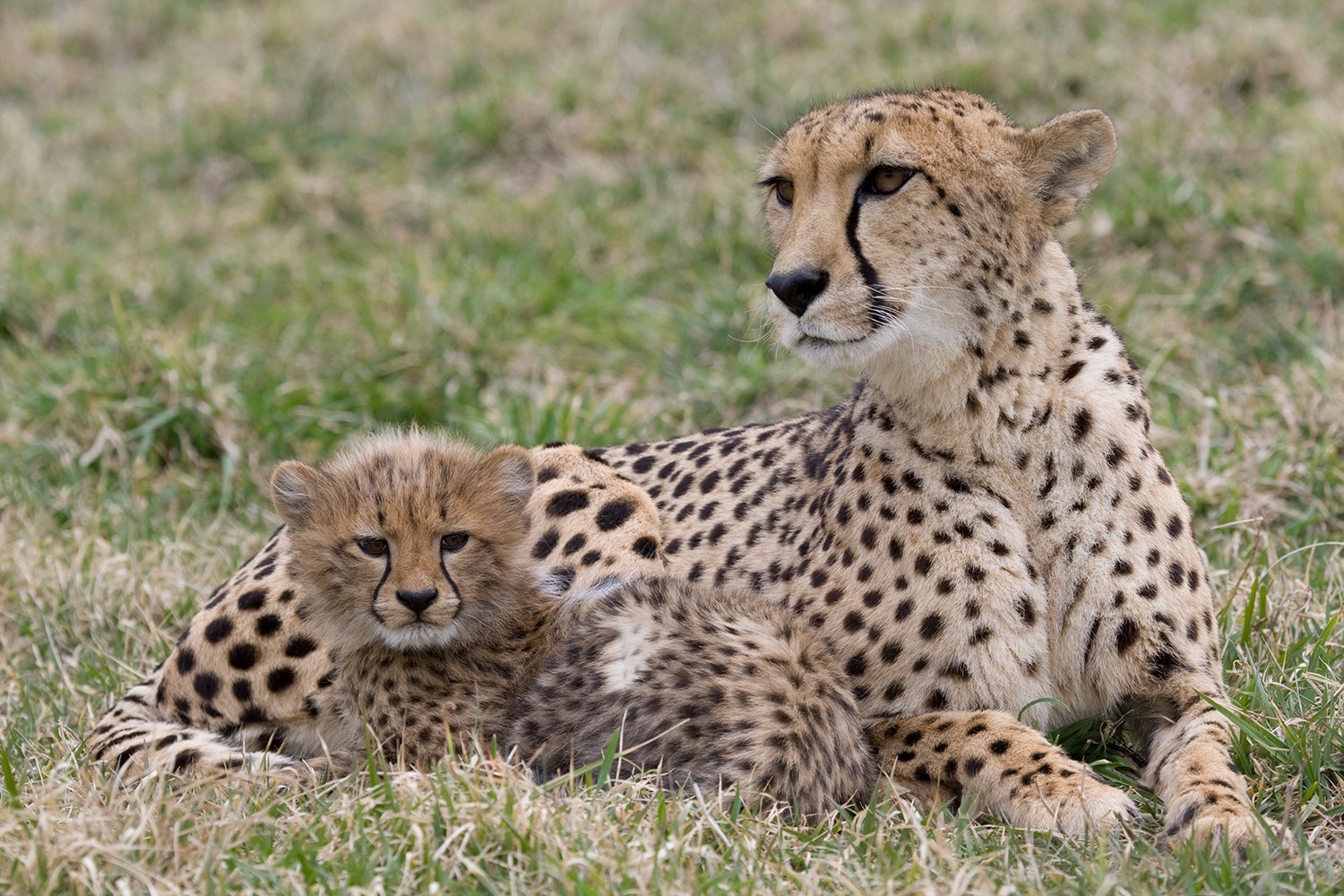Smithsonian Scientists Identify Early Indicators of Pregnancy in Cheetahs
A new study from the Smithsonian Conservation Biology Institute (SCBI) is helping make headway in an area of animal management that has historically proven challenging: the breeding of cheetahs under human care. The study, which was published Dec. 13 in the journal PLOS ONE, has identified a specific protein, immunoglobulin J (IGJ), that is more abundant in the feces of pregnant cheetahs during the first month of gestation compared to those that are not pregnant. This finding could not only lead to the first-ever early cheetah pregnancy test but could also help zoos and other cheetah facilities address long-standing reproductive issues.
Until now, animal managers have not been able to determine whether a female cheetah is pregnant until at least 55 days into the pregnancy, in part because cheetahs frequently experience pseudopregnancies, exhibiting behavioral, physical and hormonal signs of pregnancy after mating even if they are not pregnant.
“If you spend weeks or even months breeding a pair and then you have to wait two more months to find out if the female is actually pregnant, it puts a hold on your breeding operation until you know,” said Adrienne Crosier, SCBI cheetah biologist, co-author of the paper and coordinator of the Association of Zoos and Aquariums’ Cheetah Species Survival Plan (SSP), which matches cheetahs across the population for breeding. “This has made it really difficult to make timely decisions about preparing for the birth of cubs and repairing female cheetahs with new mates. With an early pregnancy-detection method—and one that is non-invasive—we will be able to make management decisions sooner and more effectively across the SSP.”
The paper also provides the first step to understanding pseudopregnancies, which have been recorded in up to 60 percent of female cheetahs that have mated in North American zoos. Researchers aim to use these findings to determine whether cheetahs experiencing pseudopregnancies are getting pregnant at some point and then losing the pregnancy, or if they are not getting pregnant at all.
“Since such a small portion of the population of cheetahs under human care actually successfully breeds, it is really important that we understand pseudopregnancy to resolve these reproductive issues,” said Diana Koester, formerly a JoGayle Howard Postdoctoral Fellow, current curator of research at Cleveland Metroparks Zoo and lead author on the study. “As the planet’s last remaining wild cheetahs continue to face mounting threats, a self-sustaining population under human care is vital to the species’ survival. So we need to ensure that we understand why females that have the potential to breed may not be doing so and to figure out how to give them every chance to do so.”
The study tested the feces of 26 cheetahs from seven institutions, many of which are part of the Breeding Centers Coalition, a group of organizations, including SCBI, brought together to address cheetah reproductive challenges after a meeting of the Conservation Centers for Species Survival consortium in 2012. The paper is the first to report on the full profile of proteins found in cheetah feces, which could also eventually be used as indicators of disease and other medical conditions in cheetahs.
“One of the things that has made this project so successful is our incredible collaborative network,” Crosier said. “Led by SCBI, the collaboration among the facilities in the Breeding Centers Coalition and the broader SSP is helping make this kind of critical research happen. Together we’re ensuring a future for this species.”
The paper’s additional authors are David E. Wildt, Morgan Maly and Pierre Comizzoli at SCBI.
SCBI plays a leading role in the Smithsonian’s global efforts to save wildlife species from extinction and train future generations of conservationists. SCBI spearheads research programs at its headquarters in Front Royal, Va., the Smithsonian’s National Zoo in Washington, D.C., and at field research stations and training sites worldwide. SCBI scientists tackle some of today’s most complex conservation challenges by applying and sharing what they learn about animal behavior and reproduction, ecology, genetics, migration and conservation sustainability.
# # #
SI-678-2017
Annalisa Meyer
202-633-3081

